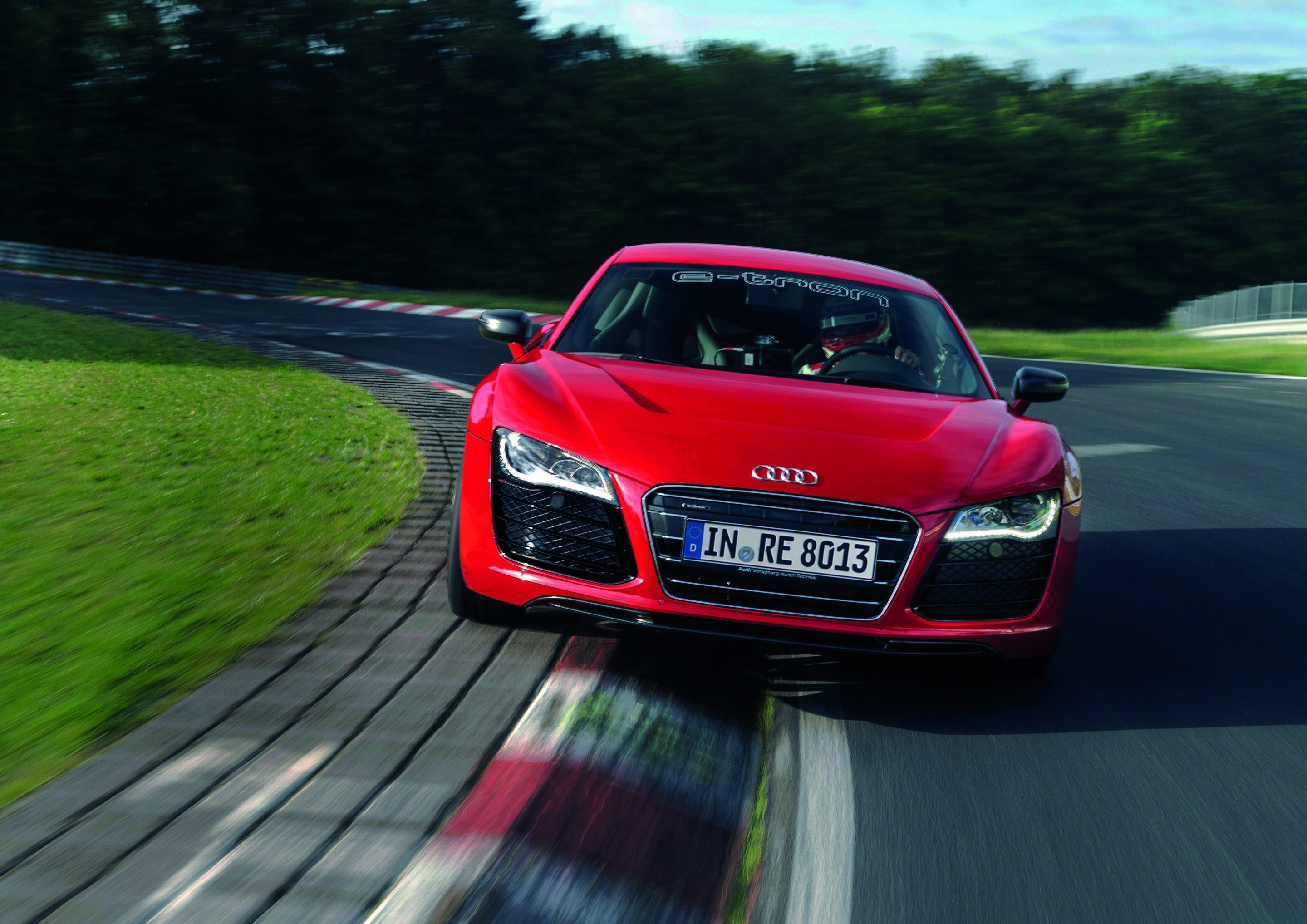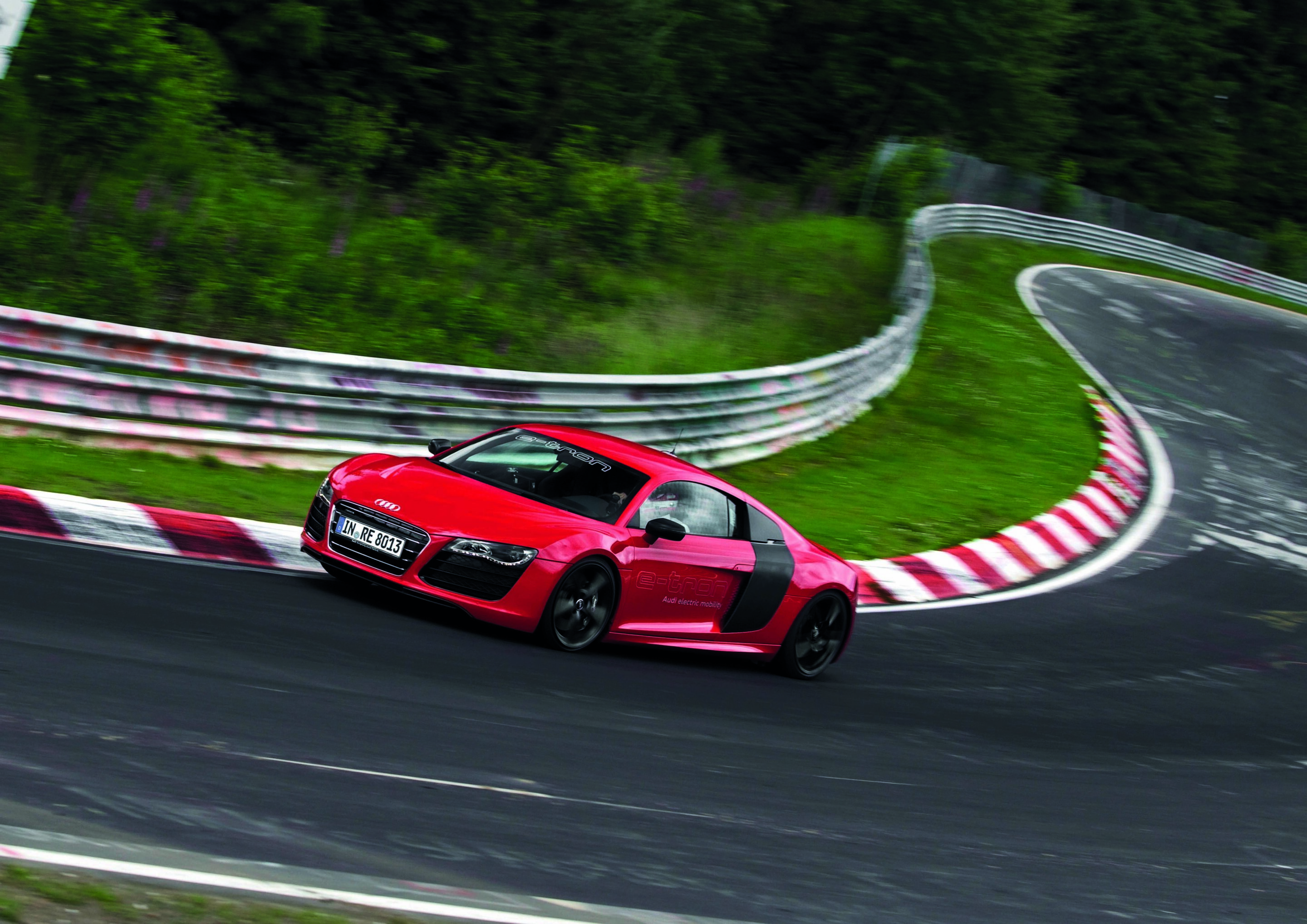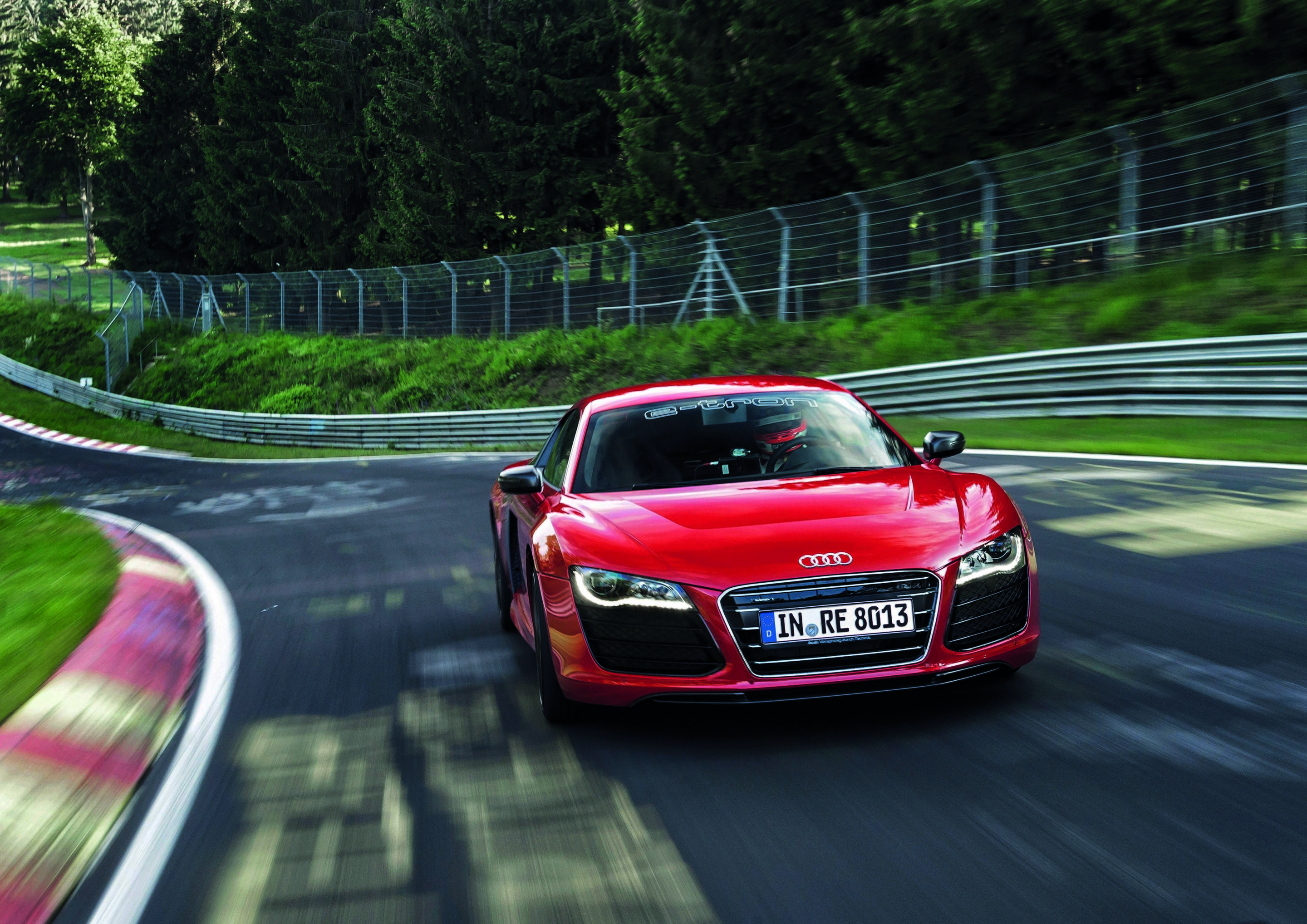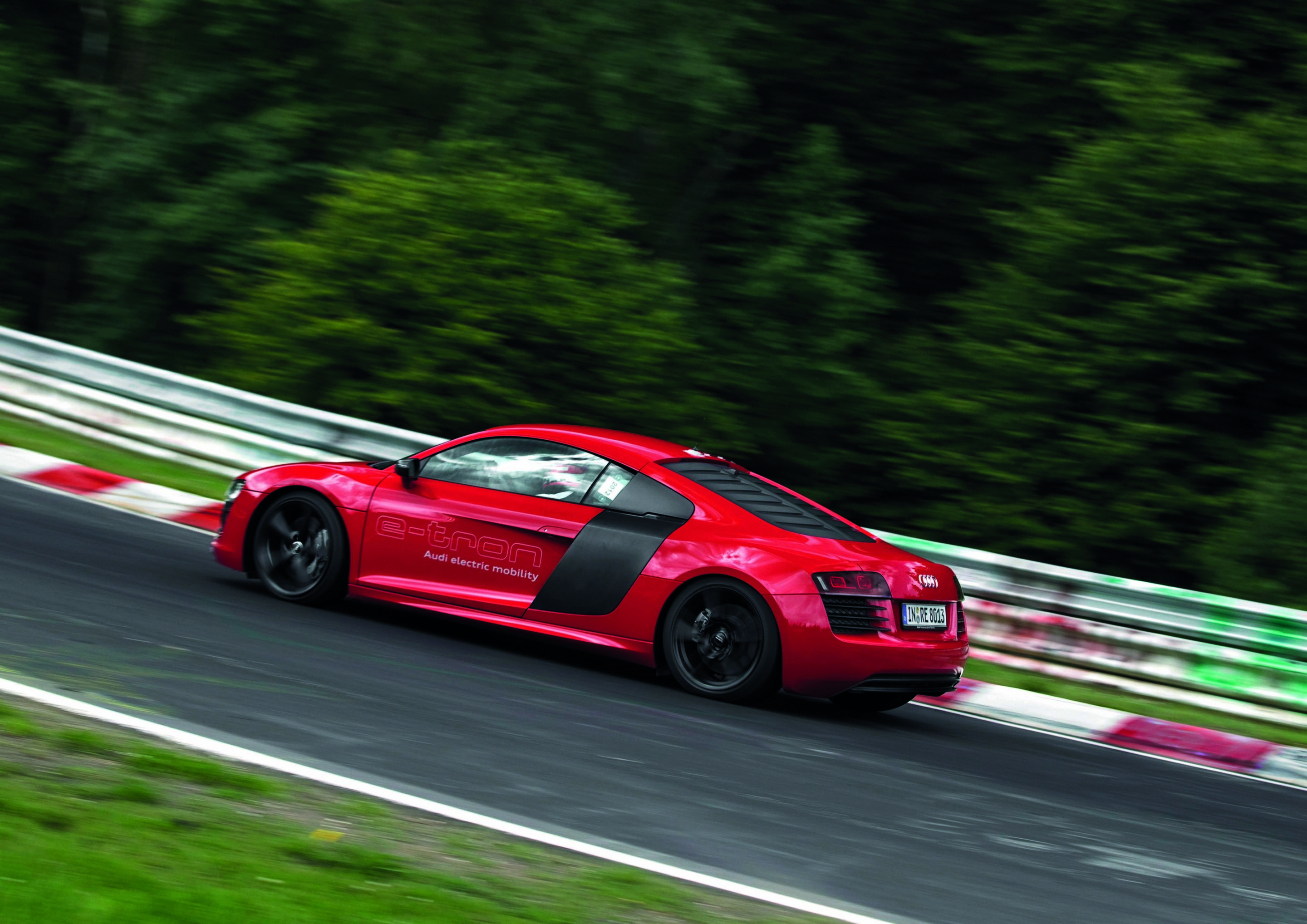Search
 Audi R8 e-tron (2015)
Audi R8 e-tron (2015)
Audi R8 e-tron (2015)
The latest evolutionary version of the electrically-powered high-performance R8 e-tron sports car achieves a performance figure of 340 kW and a torque of 920 Nm (678.6 lb-ft). It sprints from a standstill to 100 km/h (62.1 mph) in 3.9 seconds. Thanks to new battery cells, the range could be more than doubled compared to the first version of this technological wonder – it is now more than 450 kilometers (279.6 mi).
Pictures
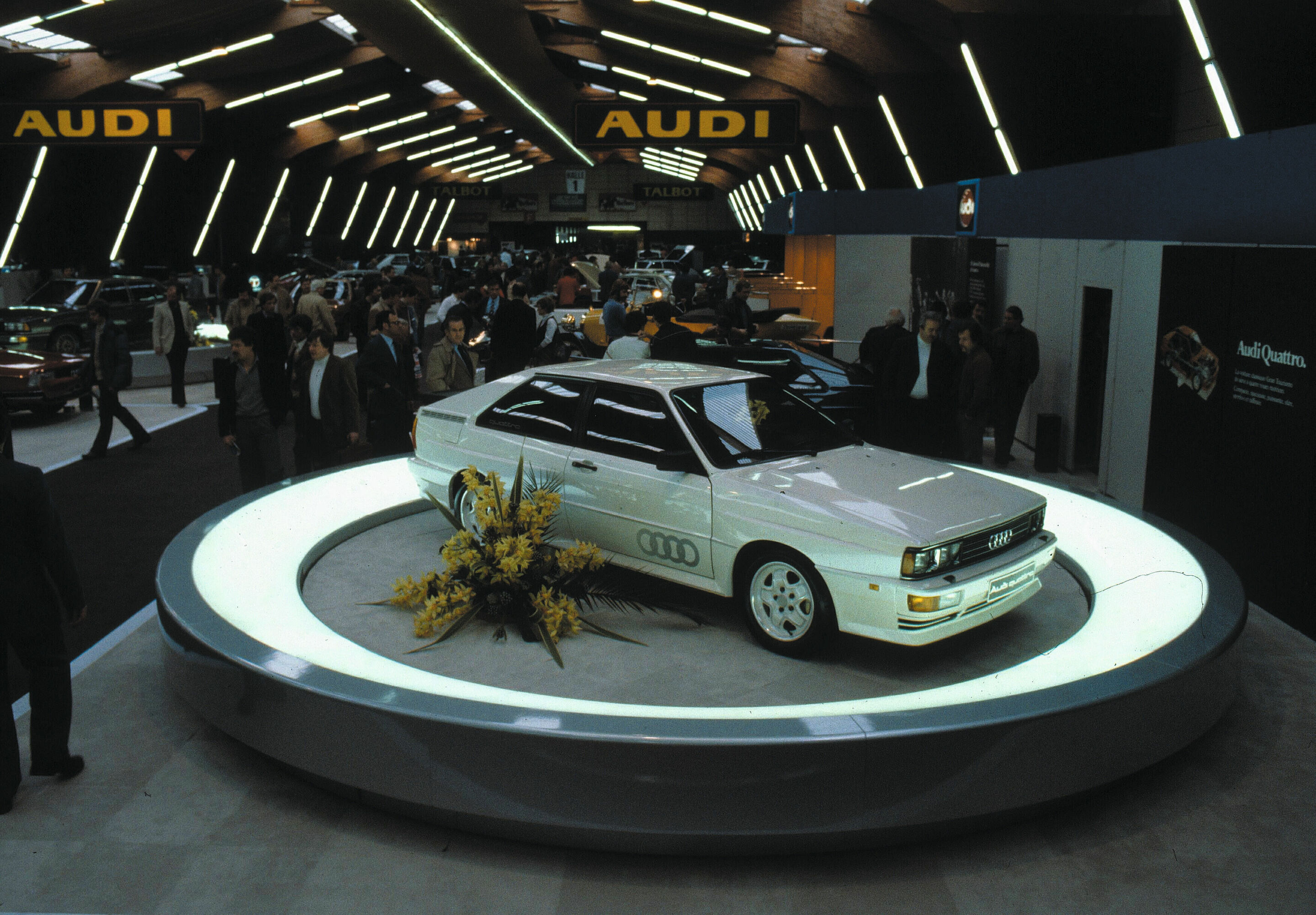 Over 40 years of quattro – over 40 years of Vorsprung durch Technik
Over 40 years of quattro – over 40 years of Vorsprung durch Technik
In 2010, the Audi quattro concept – a re-interpretation of the original quattro – appeared at the Paris Motor Show. From 2015 on, numerous concept cars heralded the future arrival of standard e-tron models with electric all-wheel drive: the Audi e-tron quattro concept (IAA 2015), the Audi e-tron Sportback concept (Shanghai 2017), the Audi e-tron GT concept (Los Angeles 2018), and the Audi Q4 e-tron concept (Geneva 2019). All terms in blue in the text are explained in detail in the technology lexicon at www.audi-mediacenter.com/en/technology-lexicon.
 Pathway to production – e-mobility at Audi
Pathway to production – e-mobility at Audi
Audi has already been developing models with all-electric or hybrid drive since the late 1980s. The first production offering of a car combining a combustion engine with an electric motor was the Audi duo from 1997, which occupied the body of an Audi A4 Avant. A landmark technological development for electric cars was the Audi R8 e‑tron, which was unveiled at the 2009 Frankfurt Motor Show and in 2012 set a record lap time for an electric car on the North Loop of the Nürburg Ring. Audi added a first plug-in hybrid to its range in 2014 in the guise of the 150 kW (204 hp) Audi A3 e‑tron – its battery units can be recharged by recuperation and cable, and give it an all-electric range of up to 50 kilometers in the NEDC. The Audi Q7 e‑tron made its debut in 2016 – it is powered by a combination of a 3.0 TDI and an electric motor which together deliver 275 kW (373 hp) and 700 Nm (516.3 lb ft) of torque. It accelerates from a standing start to 100 km/h (62.1 mph) in 6.2 seconds and is particularly efficient. In all-electric mode, it has a range of up to 56 kilometers (34.8 miles) while producing zero local emissions. It is also the world’s first plug-in hybrid with a V6 compression ignition engine and quattro drive. Another concept car unveiled by Audi in 2015, at the Frankfurt Motor Show, was the study vehicle called the e‑tron quattro concept – the forerunner of the brand’s first all-electric-drive production automobile. As a radically reconfigured SUV it offers a range of up to 500 kilometers (310.7 miles) with the spaciousness and comfort of a typical full-size automobile from Audi. It has the road performance of a high-performance sports car – the e-tron quattro sprints from 0 to 100 km/h (62.1 mph) in only 4.6 seconds. The production version of this pioneering electric SUV will appear on the market in 2018. The Audi e‑tron Sportback concept will be followed by its production version in 2019.
 e-tron: Heading for the future on electric power
e-tron: Heading for the future on electric power
Progress feels electric: Audi commits to electric mobility – at the end of 2017 on the race track with a factory-backed team of its own in Formula E, and from 2018 onward with the e-tron and numerous other production models on the road. Audi has a clear vision for the future. As early as by 2025, one in three Audi cars delivered is planned to be an electric vehicle. Even before this date, the portfolio of the brand with the four rings will include more than 20 electric and plug-in hybrid vehicles – spread across all segments and all models. Motorsport, once again, is assuming a pioneering role in this context. For nearly 40 years, Audi has been active in motorsport on the highest level in order to test new technologies for production. quattro, TFSI, TDI and hybrid are now followed by e-tron. The Audi e-tron FE04 is the group’s first fully electric race car. “With our involvement in Formula E, we are also showing in motorsport what the transformation from an automobile manufacturer to a forward-thinking mobility provider looks like,” says Rupert Stadler, Chairman of the Board of Management of AUDI AG. “With our concept of sporty electric mobility we demonstrate Vorsprung durch Technik and show how much fun a driver will have in an electric automobile.” The first vehicle to be launched in 2018 will be the sporty Audi e-tron SUV, enabling a range of more than 500 kilometers. It will be followed in 2019 by a four-door grand tourer. In 2020, Audi will be extending its electric offering by a compact model. From 2021 on, all the core model ranges are planned to be electrified, including mild hybrid technology. Including the planned volume growth, a third of all Audi models will be electrified in 2025 – either fully electric or with a plug-in hybrid. Since as far back as the late 1980s, Audi has been developing models with fully electric or hybrid drive.
 The enduring appeal of quattro
The enduring appeal of quattro
From 2015 on, numerous concept cars heralded the future arrival of standard e-tron models with electric all-wheel drive: the Audi e-tron quattro concept (IAA 2015), the Audi e-tron Sportback concept (Shanghai 2017), the Audi e-tron GT concept (Los Angeles 2018) and the Audi Q4 e-tron concept (Geneva 2019).
 The track record
The track record
Audi has fueled the appeal of quattro again and again over 40 years with a succession of spectacular concept cars. The quattro Spyder, presented at the 1991 International Motor Show (IAA) in Frankfurt am Main, Germany, was the brand’s first thoroughbred sports car of the post-war era and its first aluminum-bodied car. Just a few weeks later, Audi presented the Avus quattro at the Tokyo Motor Show. It was designed to feature a W12 engine producing 374 kW (509 PS) mounted longitudinally ahead of the rear axle, the manual transmission in the quattro drivetrain positioned between the front wheels. The Audi TT quattro Coupé and Roadster concepts presented in fall 1995 indicated the way to series production. Three more concept cars marked the expansion of the model range in 2003. At the Detroit Motor Show in January, Audi presented its Pikes Peak quattro, the predecessor to the Q7. This was followed at the Geneva Motor Show by the Nuvolari quattro two-door coupé, which paved the way for the A5. Then, in September, the Audi Le Mans quattro was the star of the IAA in Frankfurt – and also the spitting image of what would later become the R8. The Audi R8 e-tron concept, one of the stars of the IAA in 2009, was a sports car with electric-only drives at all four wheels. In 2010, the Audi quattro concept – a re-interpretation of the original quattro – appeared at the Paris Motor Show. From 2015 on, numerous concept cars heralded the future arrival of standard e-tron models with electric all-wheel drive: the Audi e-tron quattro concept (IAA 2015), the Audi e-tron Sportback concept (Shanghai 2017), the Audi e-tron GT concept (Los Angeles 2018), and the Audi Q4 e-tron concept (Geneva 2019). All terms in blue in the text are explained in detail in the technology lexicon at www.audi-mediacenter.com/en/technology-lexicon.
 Fuel consumption of the models named above
Fuel consumption of the models named above
Audi A3 Sportback e-tron: Combined fuel consumption in l/100 km: 1.7 – 1.5** (138.4 – 156.8 US mpg); Combined electrical power consumption in kWh/100km: 124 – 114**; Combined CO2 emissions in g/km: 39 – 35** (62.8 – 56.3 g/mi) Audi Q7 e-tron 2.0 TFSI quattro This vehicle is not yet on sale. It does not yet have type approval and is therefore not subject to Directive 1999/94/EC. Audi R8 LMX: This vehicle is not yet on sale. It does not yet have type approval and is therefore not subject to Directive 1999/94/EC. Audi R8 e-tron: This vehicle is not yet on sale. It does not yet have type approval and is therefore not subject to Directive 1999/94/EC. **Details on the fuel consumption, the CO2 emissions and efficiency classes given as a range depend on the tire/wheel set used.
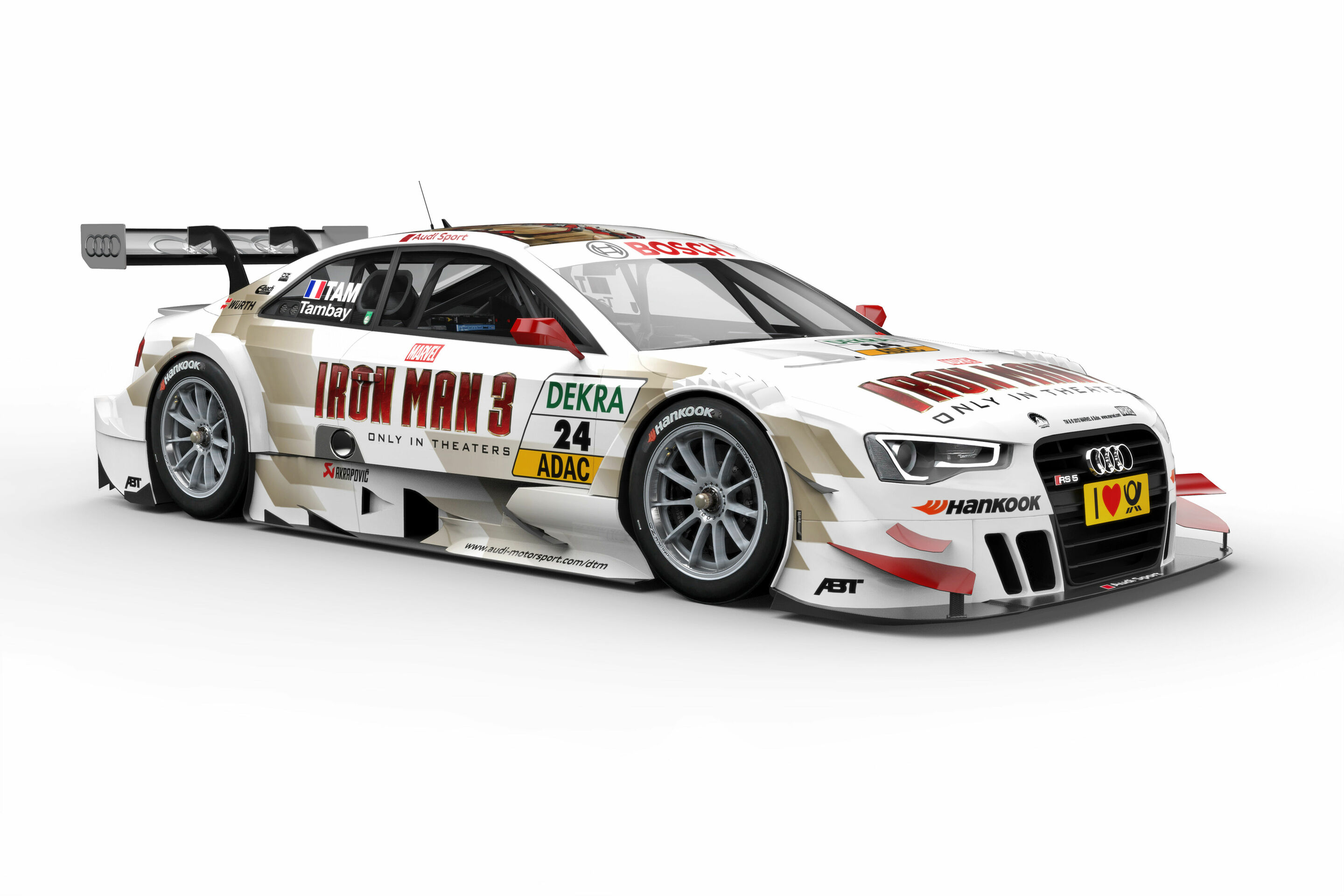 Audi RS 5 DTM ready to race at Hockenheim
Audi RS 5 DTM ready to race at Hockenheim
Furthermore, the three Audi Sport teams combine the know-how gained in more than 450 DTM races. A rookie again, despite his 83 DTM races, is Jamie Green, who will be competing at his first race weekend as an Audi factory driver at Hockenheim. The Briton, who has previously won eight rounds – including four events at the Norisring – is the only newcomer to the driver squad of the brand based in Ingolstadt. In addition to Green, Head of Audi Motorsport Dr. Wolfgang Ullrich and Dieter Gass, Head of DTM, rely on drivers from last year: a mix of seasoned campaigners and ambitious youngsters with an average of 28 years. The youngest of them will be featured in a unique way at Hockenheim: Adrien Tambay, on his race suit and on his Audi RS 5 DTM, will be advertising the movie “Iron Man 3.” His pit crew will be sporting the theme of the hero as well. In the new Marvel action film featuring Robert Downey Jr.and Gwyneth Paltrow, the Audi R8 e-tron is one of the protagonists. The movie will arrive at German theaters on Wednesday, May 1, before the DTM weekend at Hockenheim. In line with the compact schedule, the timing of the two most important events of the weekend has slightly changed as well: Qualifying starts at 14:30 on Saturday, May 4 and the race on Sunday at 13:30. As always, ARD will air live coverage on both days on “Das Erste.” Tickets for all DTM races of the 2013 season are available at www.audi-motorsport.com/DTM Quotes by the officials Dieter Gass (Head of DTM): “I’m looking forward to working even more closely with the drivers and the teams in the DTM. The first run at Hockenheim is new territory for me but I know that I’ve got a strong squad backing me that, like me, is tackling the job highly motivated. The season opener will be interesting because even after the track tests in the past few weeks we can’t assess exactly where we stand. In the few areas permitted by the regulations, we worked extremely hard at Audi Sport in the winter.
